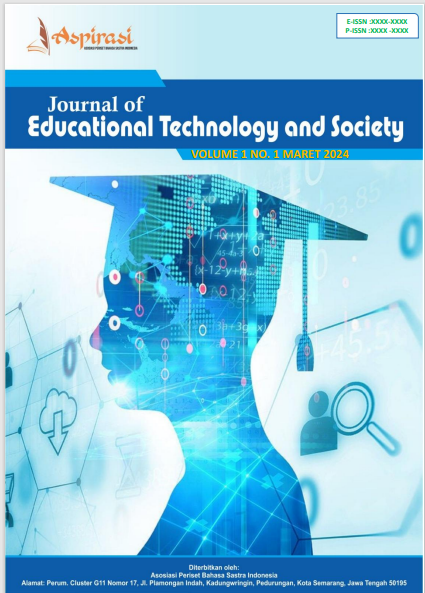The Influence Of The Direct Instruction Learning Model On Learning Outcomes For Basketball Dribble Skills
DOI:
https://doi.org/10.61132/ijets.v1i2.52Keywords:
learning outcomes, physical education, motor learning, junior high school studentsAbstract
Learning models have a role in facilitating the process of transferring knowledge carried out by teachers to students. This study applies the direct instruction learning model with the aim of improving dribble skills in basketball learning. This research uses a quantitative approach with a pseudo-experimental method. The sampling technique used was cluster random sampling involving 115 students at junior high school level 1. The results showed that the direct instruction learning model was effectively applied to basketball dribble learning. The increase in the experimental group occurred by 48.90% for the skill variable, and 25.30% for the assessment variable. These results indicate that the direct instruction learning model is better than the conventional learning model. On the other hand, the direct instruction learning model has the possibility of ineffectiveness if applied to other learning and other levels of education.
References
Awali, M. (2018). The Influence of Cognitive Abilities on Basketball Learning Outcomes. Sports Arena: Journal of Physical Education and Sports (JPJO), 1(2), 52–63. https://doi.org/10.31539/jpjo.v1i2.156
Faozi, F., Dlis, F., Samsudin, S., Hambali, S., & Riyadi, DN (2024). Cooperative Learning Vs Direct Teaching in Basketball: Effects on Junior High School Students Basic Techniques. International Journal of Disabilities Sports and Health Sciences, 7((Special Issue 1): International Conference on Sport Science and Health (ICSSH, 2023)), 131–140. https://doi.org/10.33438/IJDSHS.1371249
Gamero, M.G., García-Ceberino, J.M., Ibáñez, S.J., & Feu, S. (2021). Analysis of Declarative and Procedural Knowledge According to Teaching Method and Experience in School Basketball. Sustainability, 13(11). https://doi.org/10.3390/SU13116012
González-Espinosa, S., García-Rubio, J., Feu, S., & Ibáñez, S. J. (2021). Learning Basketball Using Direct Instruction and Tactical Game Approach Methodologies. Children, 8(5). https://doi.org/10.3390/CHILDREN8050342
Iswanto, A., & Widayati, E. (2021). Effective and quality physical education learning. MAJORA: Sports Science Magazine, 27(1), 13–17. https://doi.org/10.21831/majora.v27i1.34259
Khoeron, N. (2017). Basketball Smart Book. Jakarta: Grace.
Khoerunnisa, P., & Aqwal, SM (2020). Analysis of Learning Models. Fondatia, 4(1), 1–27. https://doi.org/10.36088/fondatia.v4i1.441
Nugroho. (2019). Teacher Considerations in Giving Study Assessment of Physical Education Based on Cognitive, Affecti. Journal of Health and Recreation Physical Education, 1–10.
Nurkholis. (2013). EDUCATION IN AN EFFORT TO ADVANCE TECHNOLOGY By: Nurkholis Doctor of Education, Alumnus of Jakarta State University Extraordinary Lecturer, Tarbiyah Department, STAIN Purwokerto. Journal of Education, Vol. 1 No. 1 November 2013, 1(1), 24–44.
Oliver, J. (2007). Basketball basics / Jon Oliver. Retrieved from //opac.lib.um.ac.id%2Findex.php%3Fp%3Dshow_detail%26id%3D32569%26keywords%3D
Park, J., & Jeong, J. (2023). Dribble Accuracy and Arm Coordination Pattern According to Motor Expertise and Tempo. International Journal of Environmental Research and Public Health, 20(10). https://doi.org/10.3390/ijerph20105788
Putra, TR (2014). Application of Basketball Games to Improve Learning Outcomes. Sports And Health Education, 02, 398–401.
Qodri, Abd. (2017). HUMANISTIC LEARNING THEORY IN IMPROVING STUDENT LEARNING ACHIEVEMENT Abd. Pedagogical Journal, 04(02), 188–202.
Rustiawan, H., Risma, R., & Nursasih, ID (2020). Direct Instruction Learning and Personalized System For Instruction on the Amount of Active Time Learning Physical Education. Journal of Sports, 6(1), 32–43. https://doi.org/10.25157/JKOR.V6I1.4923
Sanjaya, J. (2019). Effect of Direct Instructional Model, Problem Solving, and Attitude on Lay Up Shoot Learning Outcomes in Basketball Games. https://doi.org/10.4108/EAI.3-11-2018.2285726
Septiana, N. (2022). Formation of Students' Religious Character in the Aqidah Morals Subject Using the Direct Interaction Learning Model. Ebtida': Journal of Islamic Basic Education, 2(1), 130–136. https://doi.org/10.33379/ebtida.v2i1.1548
Sulistyoningrum, I., Simanjuntak, V., Program, S., Education, S., Health, J., Recreation, D., & Untan, F. (2015). THE INFLUENCE OF THE DIRECT INSTRUCTION (DI) LEARNING MODEL ON BASKET SHOOTING AT SMAN 3 PONTIANAK. Journal of Equatorial Education and Learning (JPPK), 4(4). https://doi.org/10.26418/JPPK.V4I4.9927
Downloads
Published
How to Cite
Issue
Section
License
Copyright (c) 2024 International Journal of Educational Technology and Society

This work is licensed under a Creative Commons Attribution-ShareAlike 4.0 International License.





